A few months ago, I wrote a post about the J.Evans Dairy in Warren Street. After walking along Warren Street I headed south along Fitzroy Street to have a look at Fitzroy Square, one of the many squares and gardens built as London expanded north and west during the 18th and early 19th centuries.
It was the weekend, so was quiet during my visit, but it was strange walking from the traffic of the Euston Road, to a peaceful square and the sound of birdsong.
Fitzroy Square is south of Warren Street and Euston Road and to the west of Tottenham Court Road.
A large square with a central, circular garden. In the following map extract, Fitzroy Square can be seen in the centre (© OpenStreetMap contributors):
Fitzroy Square was developed by Charles Fitzroy, the 1st Baron Southampton in the 1790s, when the east and south sides of the square were built. The northern and western sides to the square were added between 1825 and 1835.
The amount of building in this part of London during the later half of the 18th century and early 19th century must have been considerable.
John Rocque’s map of 1746 still shows the area as rural, consisting of large fields, some roads and tracks across the fields.
The following extract from Rocque’s map shows the area. I have highlighted the approximate location of Fitzroy Square with the orange rectangle.
Tottenham Court Road is the road towards the right side of the map, running from top to bottom. The cluster of buildings towards the top of Tottenham Court Road is where the future junction with Euston Road would be located.
The following photo is from where Fitzroy Street joins Fitzroy Square. The two built sides of the square (eastern on the left and southern in the distance), were the first parts of the square to be developed, both to designs by the Adams brothers however the southern side of the street was very badly damaged during the last war and has since been rebuilt.
The London Metropolitan Archives, Collage collection has a very similar view of the square to my photo above. The print below is dated 1800 and shows the square looking much the same as it does today, with the exception of the trees and plants in the central garden which originally appeared to be empty space.
Image credit: London Metropolitan Archives, City of London: catalogue ref: SC_PZ_SP_02_122
Residents of city squares often wanted the central space kept free as there was concern about who could be hiding in the planting (worries about robbery and theft) , or that planting the central square would take away from the grandeur of the surrounding houses.
There is a newspaper report from October 1795 which states that “A new market for the sale of meat, vegetables &c. was on Saturday opened on Lord Southampton’s estate in the neighbourhood of Fitzroy Square”. Perhaps this is what the centre of the square was used for, however I would be surprised if such a market was allowed in the centre of the square as it would probably have had an impact on the perception of the square and the value of the properties.
Rather appropriately, the conservation body, the Georgian Group have their head office in one of the buildings along the eastern side of the square.
Horwood’s map of London from 1799 confirms that the southern and eastern sides of the square were developed first, with the northern and western sides developed later in the 19th century.
Compare Horwood’s map of 1799 with Rocque’s map of 1746 and it shows how much building there had been in the 50 years between the two maps.
The street leading off Fitzroy Square from the south-east corner was Grafton Street, but is now Grafton Way, possibly renamed to avoid confusion with a Grafton Street that had already been built.
This is the northern side of Fitzroy Square, which was built between 1827 and 1828:
There are a number of Blue Plaques across the square. On the building that houses the Mozambique High Commission, along the western side of the square, is a plaque recording that Robert Gascoyne Cecil, 3rd Marquess of Salisbury lived in the building. He was prime Minister for various periods between 1885 and 1902.
Further along the western side of the square are two plaques on the same building that record George Bernard Shaw and Virginia Woolf living in the building (although not at the same time).
View across the square from the south-western corner. When the trees are in full leaf they will obscure the new towers that hover behind Fitzroy Square and it is possible to imagine the square as it would have looked soon after completion.
The gardens in the centre of the square are privately owned, belonging to those who own the freehold of the buildings that surround the square. The gardens are occasionally open during the Open Garden Squares Weekend.
The sculpture in the gardens, to the right of the above photo is titled ‘View’ and is by Naomi Blake. It was installed to commemorate the Queen’s Silver Jubilee in 1977
The southern edge of the square was badly damaged by wartime bombing and a high explosive bomb fell on the north-west corner.
As with many open spaces in London during the war, it was used for temporary water storage, to be used in the event of fires, as bombing frequently reduced the supply and pressure of water from the underground pipes. A strange and tragic death was recorded in the Daily Mirror on the 4th July 1942 highlighting the dangers of these water storage installations:
“Nap – It Led To His Death: Giving evidence at a St. Pancras inquest yesterday on Frank Edgar Husson, 51, of Stanhope-street, St. Pancras, who was drowned in an emergency water dam in Fitzroy-square, Dr. jean Mary White suggested that Husson might have fallen asleep while seated on a girder and slipped into the water.
It was stated that Husson, a builder’s labourer, walked across a girder, and as he had ten minutes before resuming work after lunch, he might have sat on a girder. No splash was heard. A verdict of accidental death was recorded.”
During the war, The Sunday Mirror had a regular feature where men in the services would write in regarding someone they briefly met, and wanted to meet again. The Sunday Mirror promised that “We print each letter in the hope that the girl will recognise herself and, if she cares to, will write. We have the full names and addresses of each man.”
Fitzroy Square featured in one letter on the 30th March 1941 from a Corporal R. Stephens of the Coldstream Guards:
“During a London blitz I was walking in Fitzroy-square when a bomb hit a nearby building, and my friend and I made for a rush for the wreckage where a number of girls were sheltering in a basement. By this time the A.R.P. men were well on the job, and all the girls, with the exception of two, were escorted to nearby houses for shelter.
The two left behind accompanied my friend and I to a public shelter, having to fling ourselves flat several times while bombs fell perilously close.
I admired those two girls for their bravery, and one in particular fascinated me so much that I felt that I did not want to leave her.
But I was obliged to leave, without even plucking up enough courage to make a date with her, as I had to be back in barracks at midnight.
I am hoping though, that she will recognise herself, and will write to me.”
It is this sort of human detail that I find fascinating – so many millions of individual stories of those who have been in London over the centuries. I wonder if Corporal R. Stephens ever did find the girl he met in Fitzroy Square?
The western terrace of houses, dating from 1832 to 1835:
On the south side of the square are numbers 34 and 35. On the step in front of the identical door are the words “Swiss House”.
The Swiss House was a “Home for Aged Swiss” opened in 1936 by the Swiss Benevolent Society. an organisation that dates back to 1703 and set-up to provide aid to Swiss residents of London. The society is still in operation today (but not in Fitzroy Square).
In the centre of the southern terrace are two red doors, with a plaque in the middle recording the architect of the southern and eastern sides – Robert Adam.
At the weekend, Fitzroy Square is quiet. Walkers through the square generally seemed to be heading to another destination, however the view across to the north side of Fitzroy Square caught the attention of a number of people who decided to sit and admire the view:
Looking across to the eastern side of the square:
The eastern terrace, along with the southern terrace, the first to be developed in the 1790s:
One of the entrance doors in the eastern terrace, with some lovely detail in the fanlight:
The photo below shows the south side of the square:
The buildings at either end of the southern terrace were for a time occupied by medical institutions.
In 1929, the London Foot Hospital and School of Podiatric Medicine moved into number 33 Fitzroy Square (the building on the right of the terrace in the above photo), and in 1959, number 40 (the building on the left of the terrace), which had been the London Skin Hospital, also became part of the London Foot Hospital, where the hospital would stay until closure in 2003.
There is an interesting statue on the side of the building that was the London Foot Hospital:
This is Francisco de Miranda:
Francisco de Miranda was an interesting character. Born in Caracas, Venezuela on the 9th June 1756, he was originally an officer in the Spanish colonial armies, but seems to have been involved in almost any American (north and south) or European war in the later part of the 18th century and early 19th century.
He fought with the French during the American Revolutionary War, various battles across Europe for the French including the taking of Antwerp and at the siege of Maestricht, but was really interested in the independence of Venezuela, and his involvement with European Governments (apart from the Spanish) was with trying to gain support for this cause.
The reason for this statue on the corner of Fitzroy Square is that he had a number of stays in London, living for a time at 58 Grafton Way, which also joins Fitzroy Square at this corner.
There is a plaque adjacent to the statue which claims he lived here from 1802 to 1810, however from various other references this was not a continuous stay, and I am not sure if the period stated is correct.
His first visit to London appears to have been in the late 1780s when he was in London meeting Prime Minister William Pitt and looking for support against the Spanish in the independence of Venezuela.
Up until 1803 he had been in the Netherlands, before returning to France from where Napoleon expelled him in 1804 when he returned to London.
Along with his travelling the world and fighting battles, it also appears he was a bit of a philanderer. Whilst in London Miranda married Sarah Andrews, a Yorkshire farmers daughter. Sarah lived in London, caring for their two children whilst Miranda was away, so perhaps the period 1802 to 1810 refers to the time Sarah Andrews was in residence with Miranda making occasional returns to London.
1810 appears to be the year he left London for good as he returned to Venezuela to fight with the revolutionary forces and was briefly ruler, until being arrested by the Spanish in 1812. He was imprisoned in Cadiz until his death in 1816.
The base of the statue:
There is a plaque commemorating his wife, Sarah Andrews, but not in London. In 1981 the Venezuelan Ambassador unveiled a plaque in her home village of Market Weighton in East Yorkshire. It would be interesting to know how a Venezuelan freedom fighter met a Yorkshire farmer’s daughter.
London has always been a place where those fighting revolutionary wars and independence for their home countries would seek temporary refuge. I have written about a couple of other examples, Giuseppe Mazzini in Laystall Street, and Sun Yat-sen in Gray’s Inn Place, and there are many more similar stories to be found all across London.
A final look back from the southern stretch of Fitzroy Street into Fitzroy Square:
There is one significant difference between all the above photos and my usual photos of London streets – there are no cars.
The western, southern and eastern sides of the square are pedestrianised, with only the northern stretch of the square continuing as a traffic route. When you come across an area without any traffic, without parked cars lining the streets, it is very noticeable how much this improves the experience of walking through the city. Although there were few people walking through the square at the weekend, many of those who did would stop and look at the view, or sit for a while on the seats at the southern side of the square.
Obviously not practicable to extend this approach across large areas of London, but a bit more pedestrianisation really does improve London’s streets.

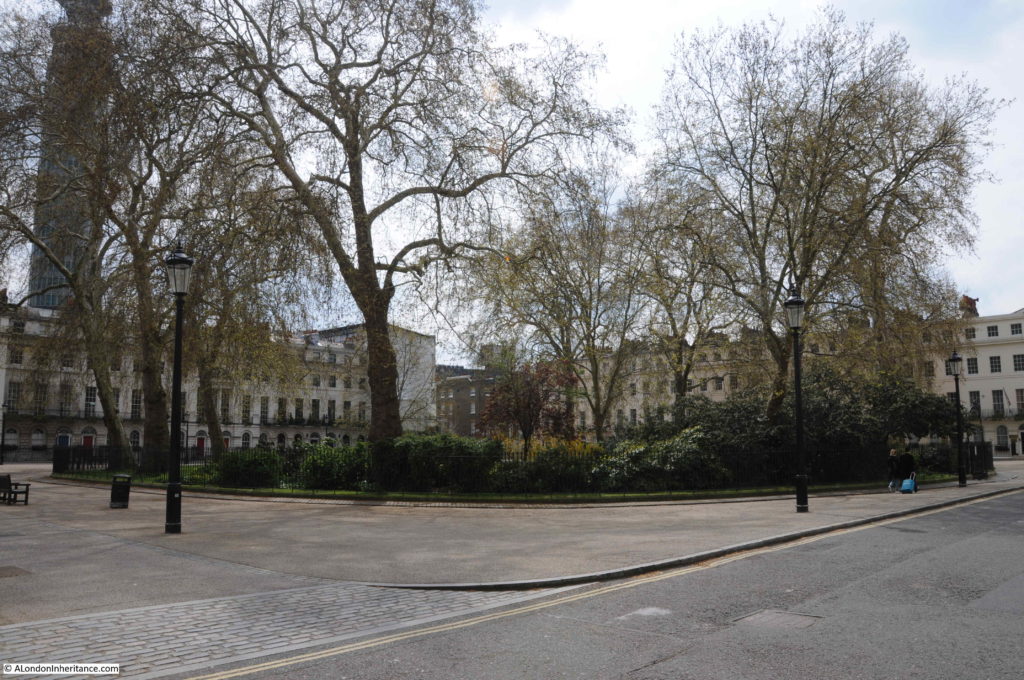
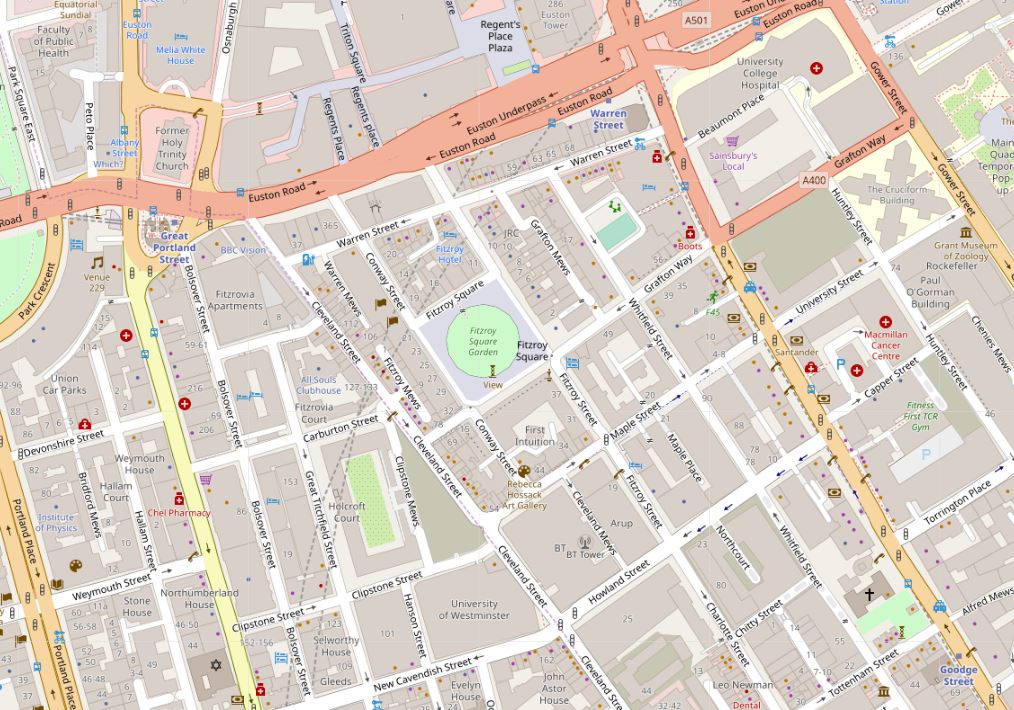
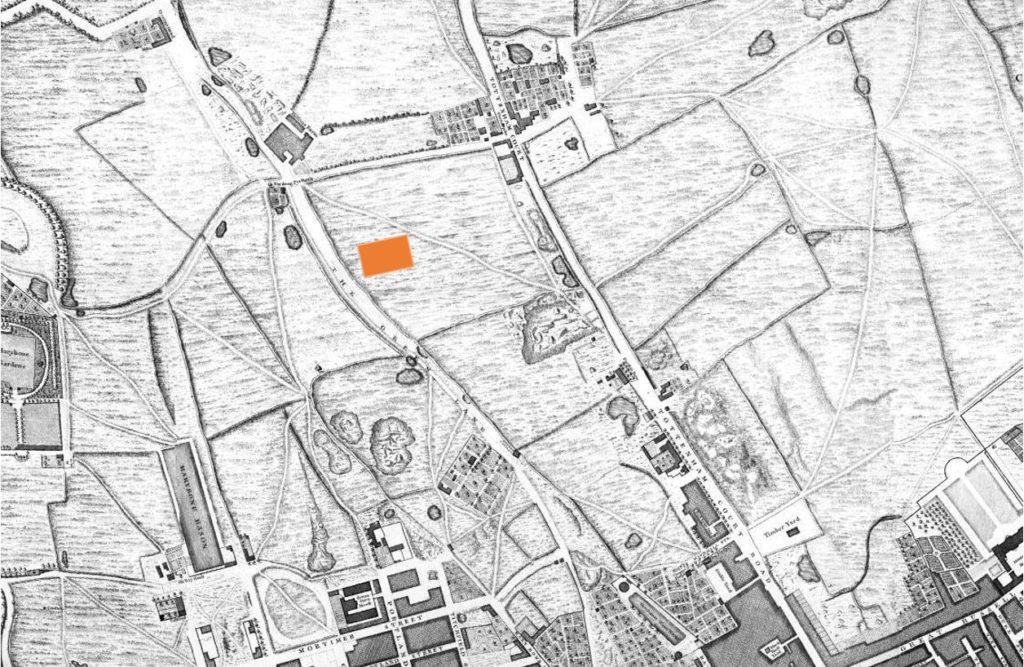

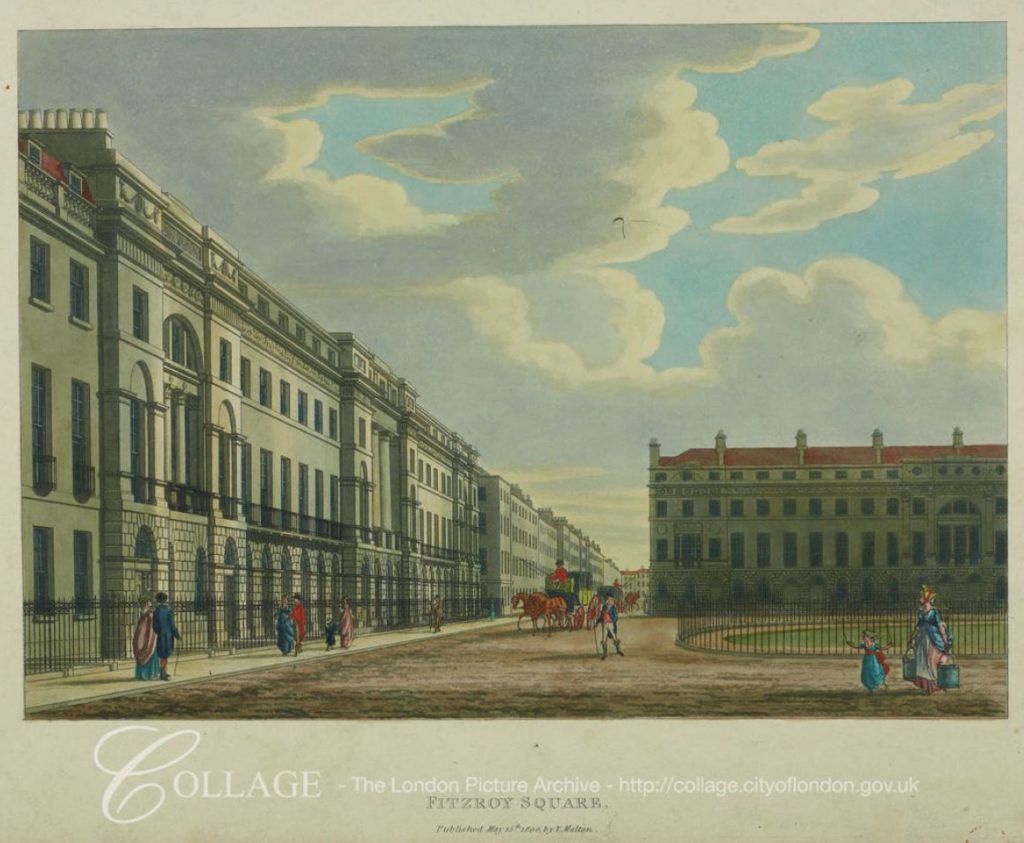
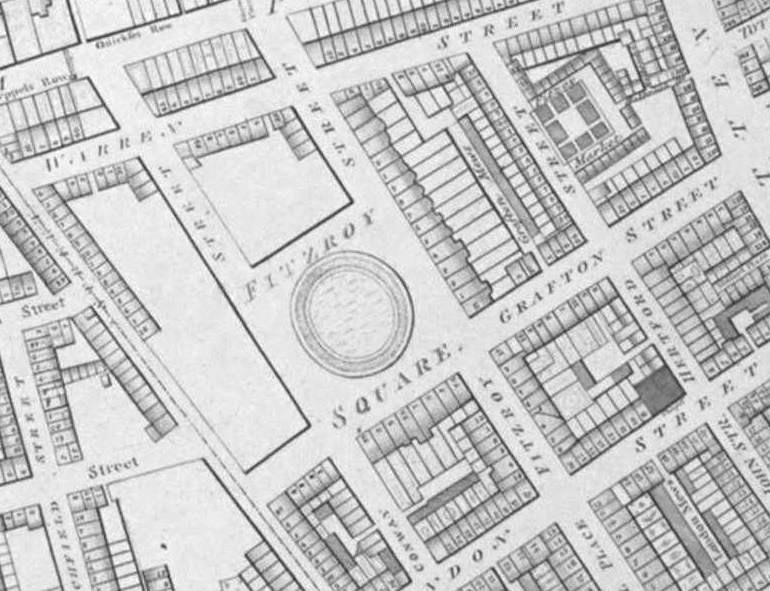
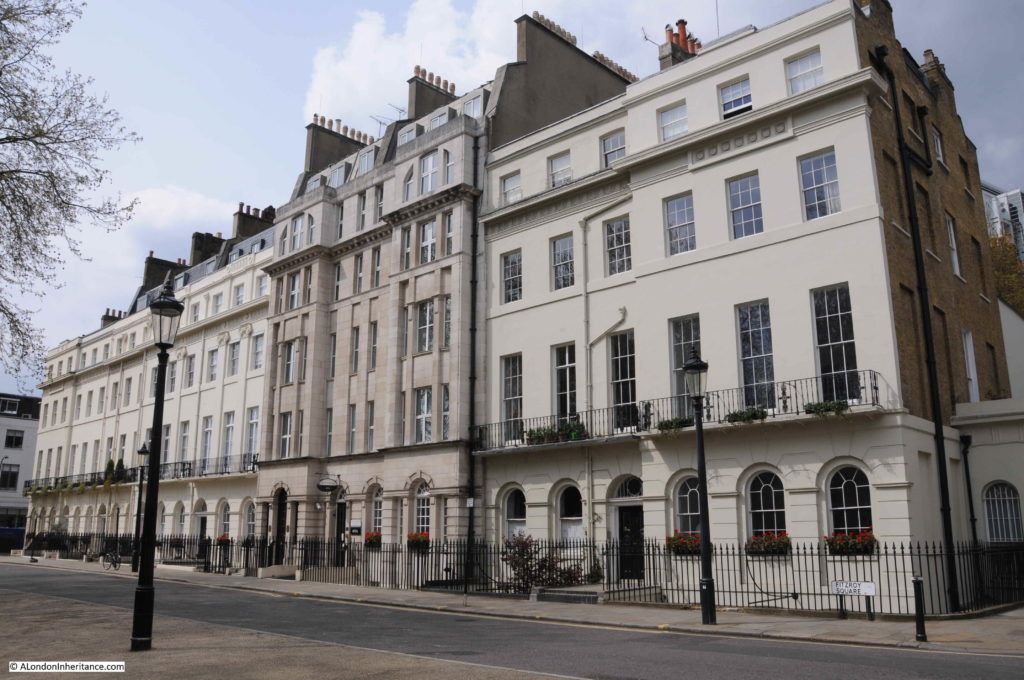
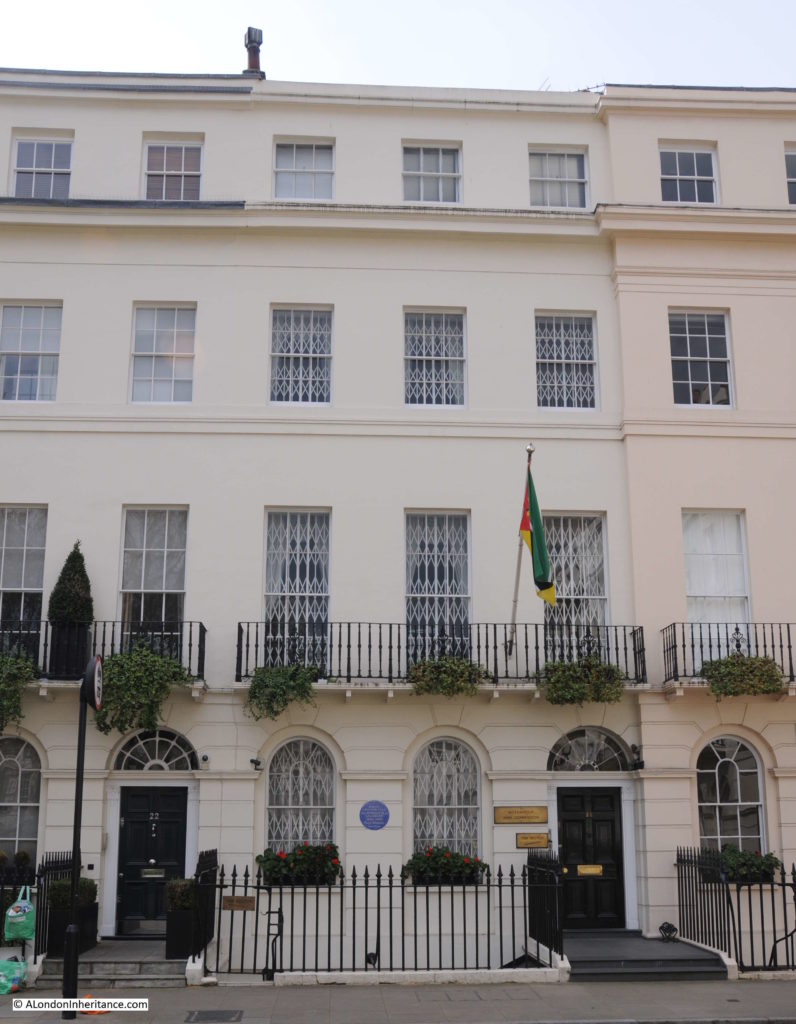


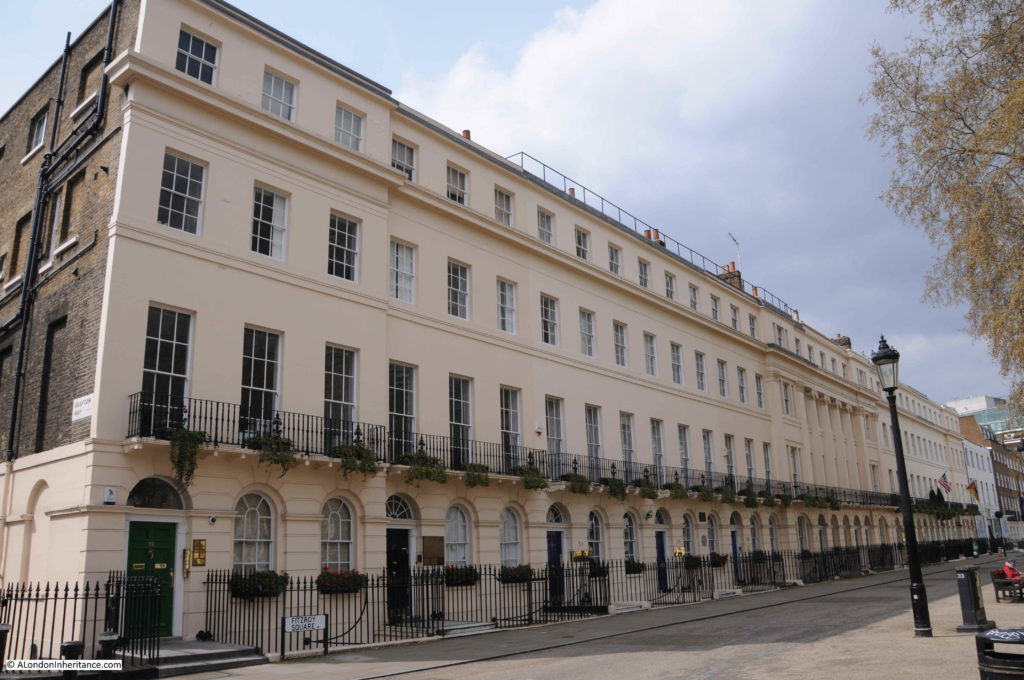
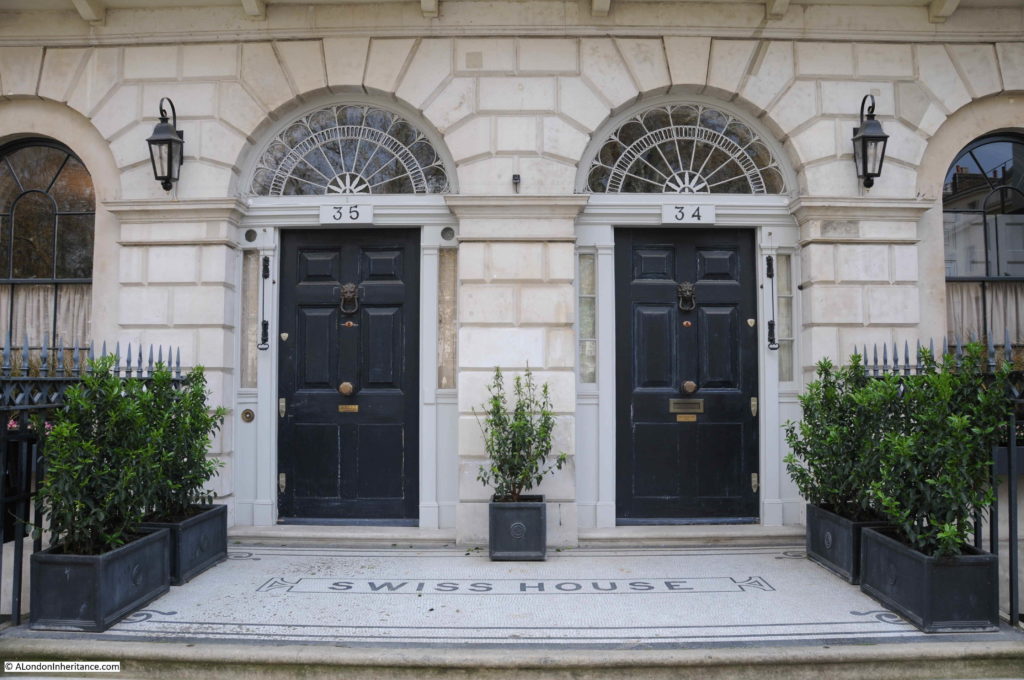
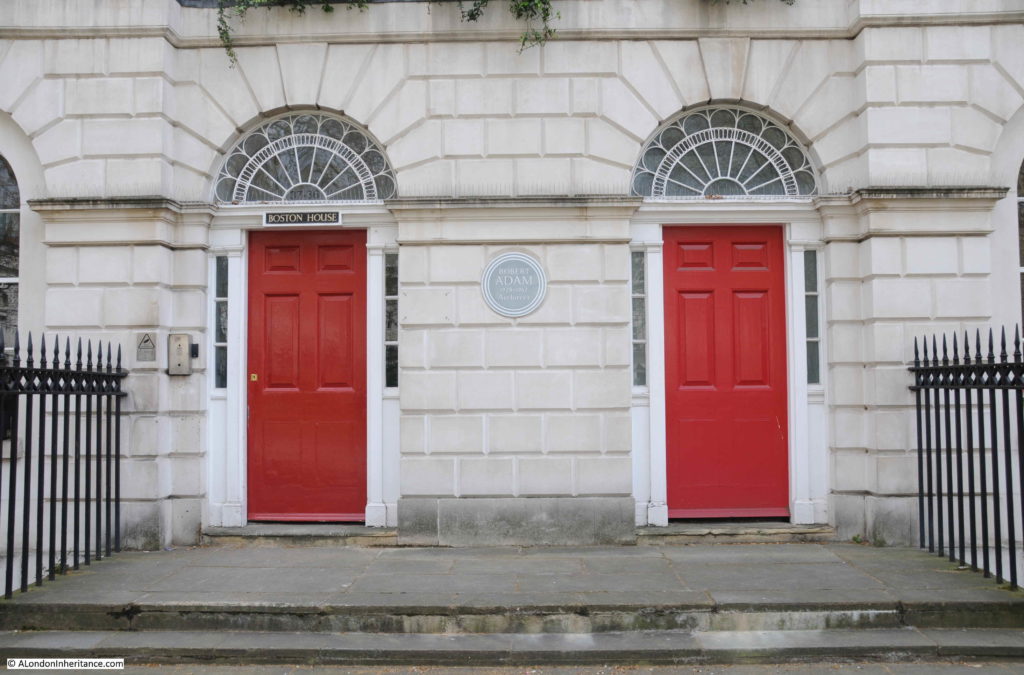
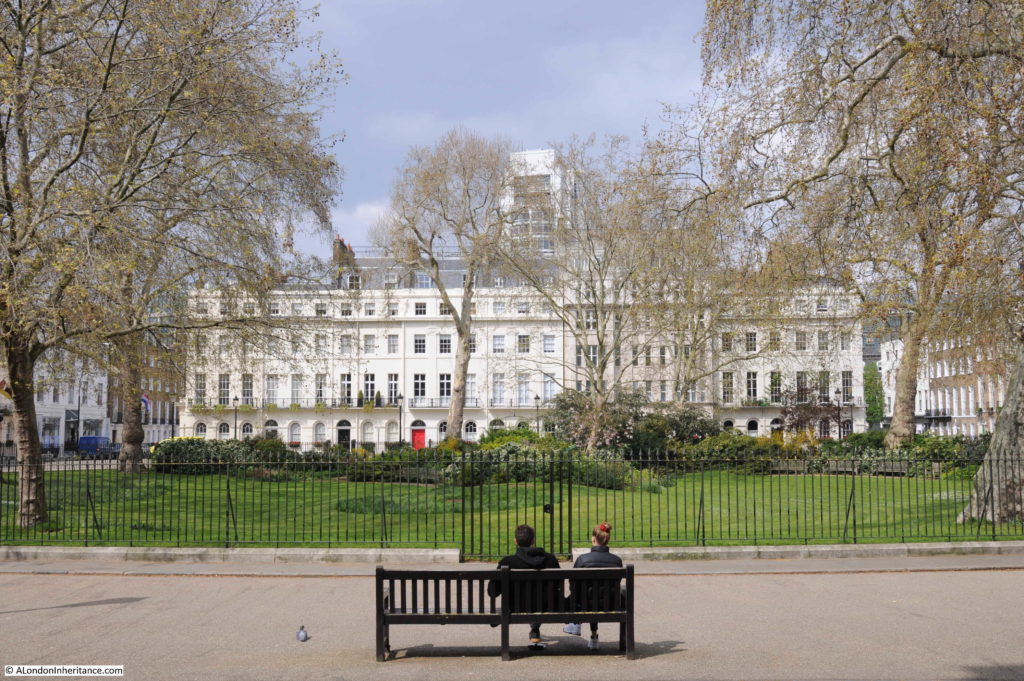


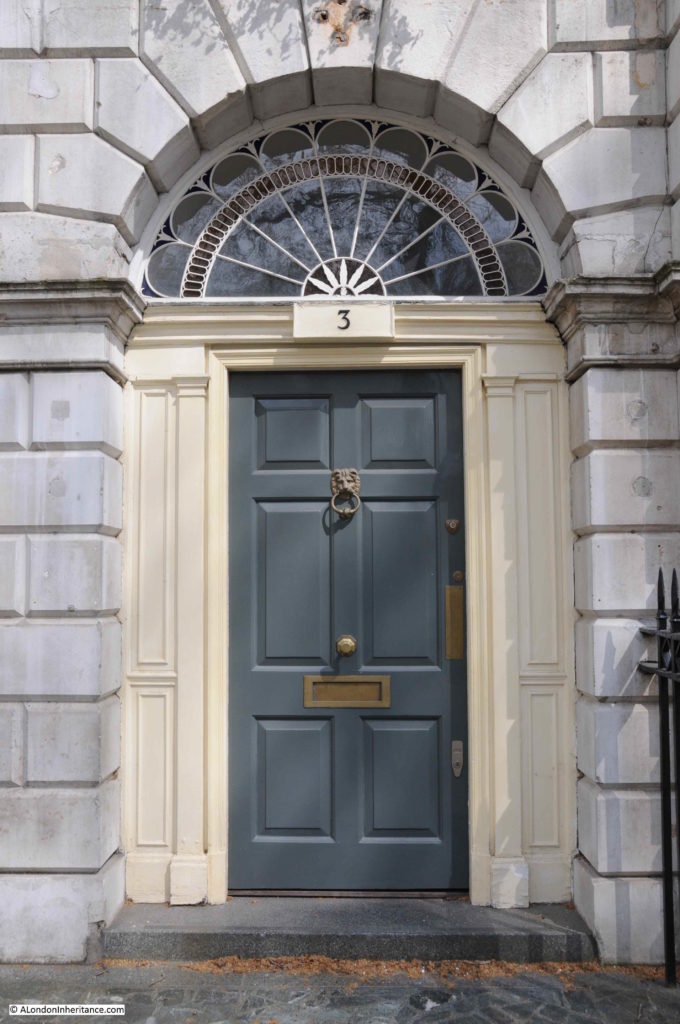

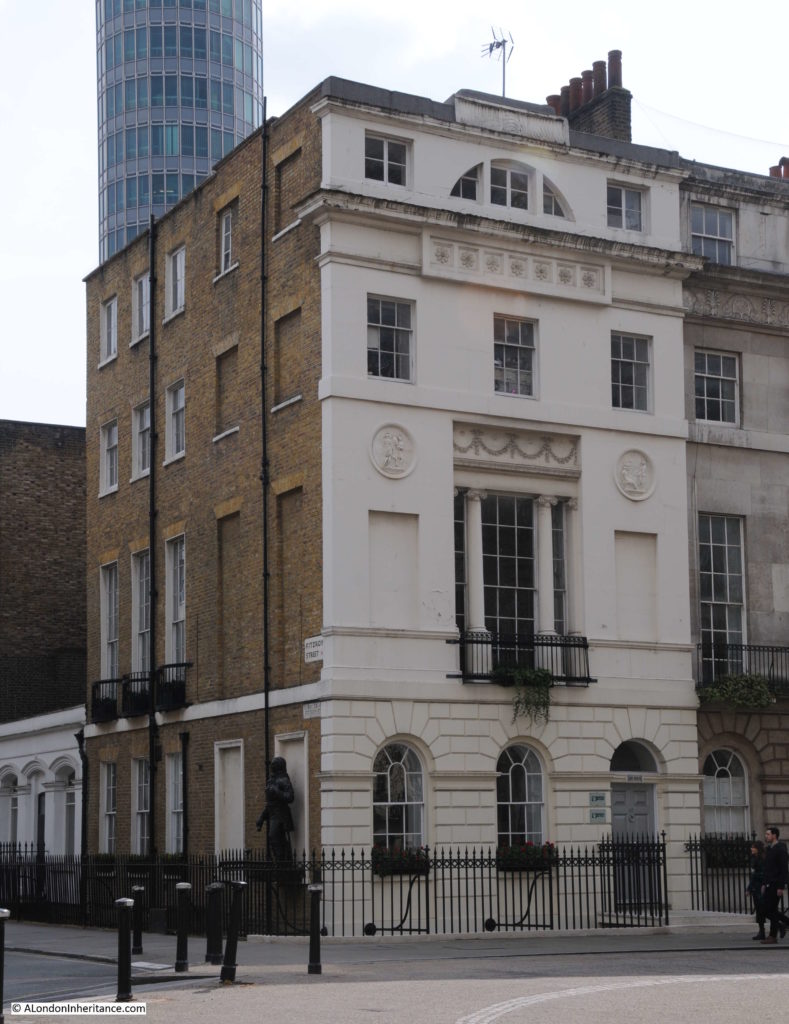
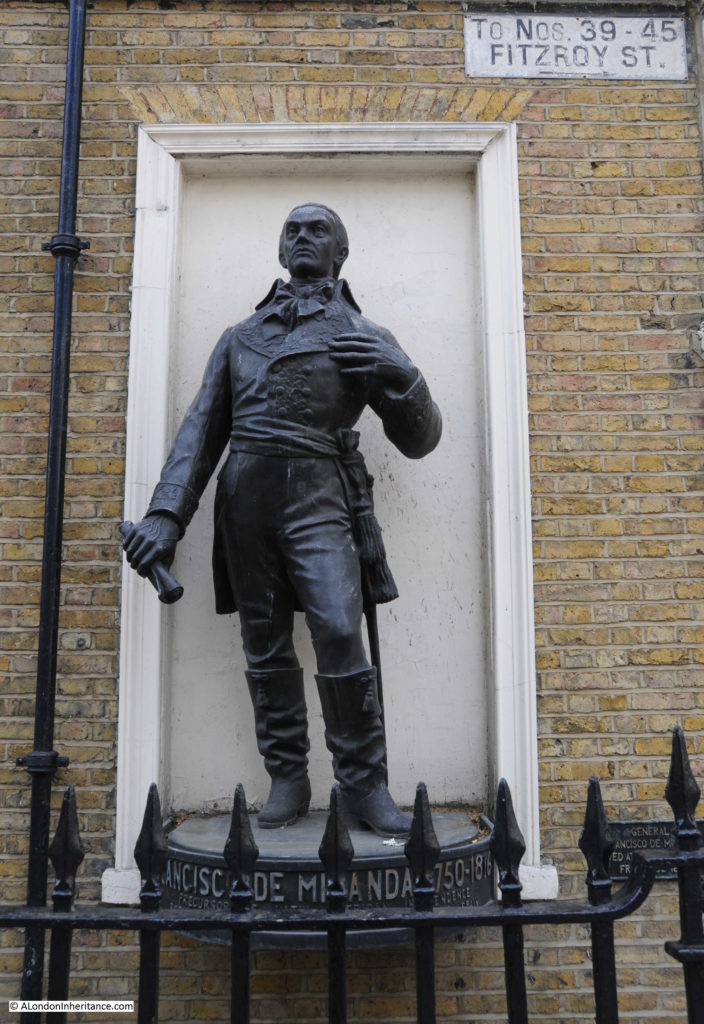
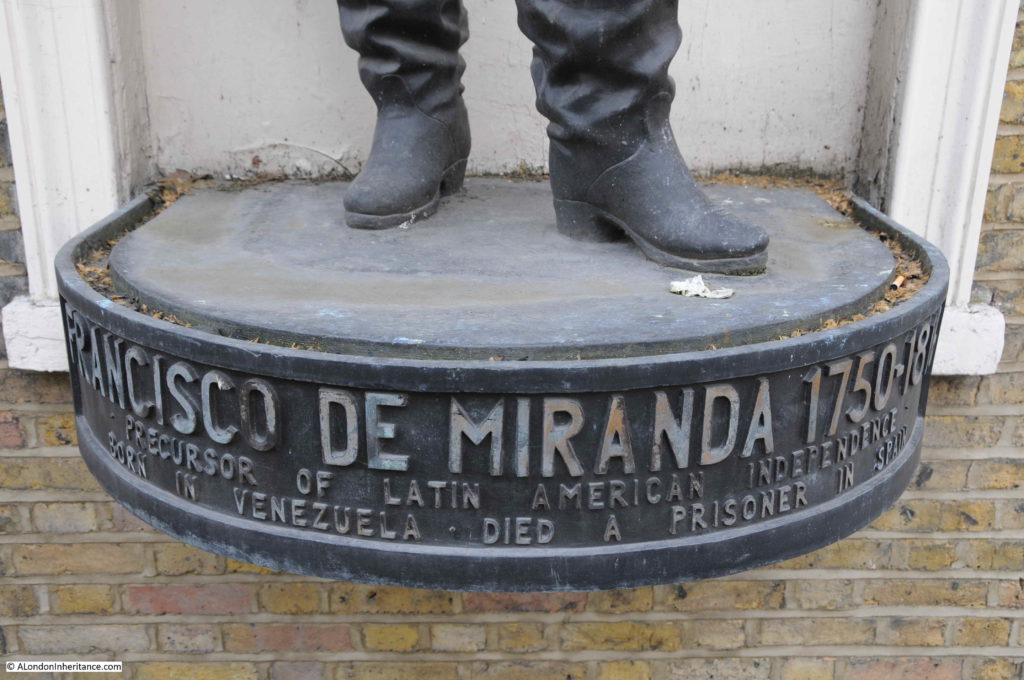
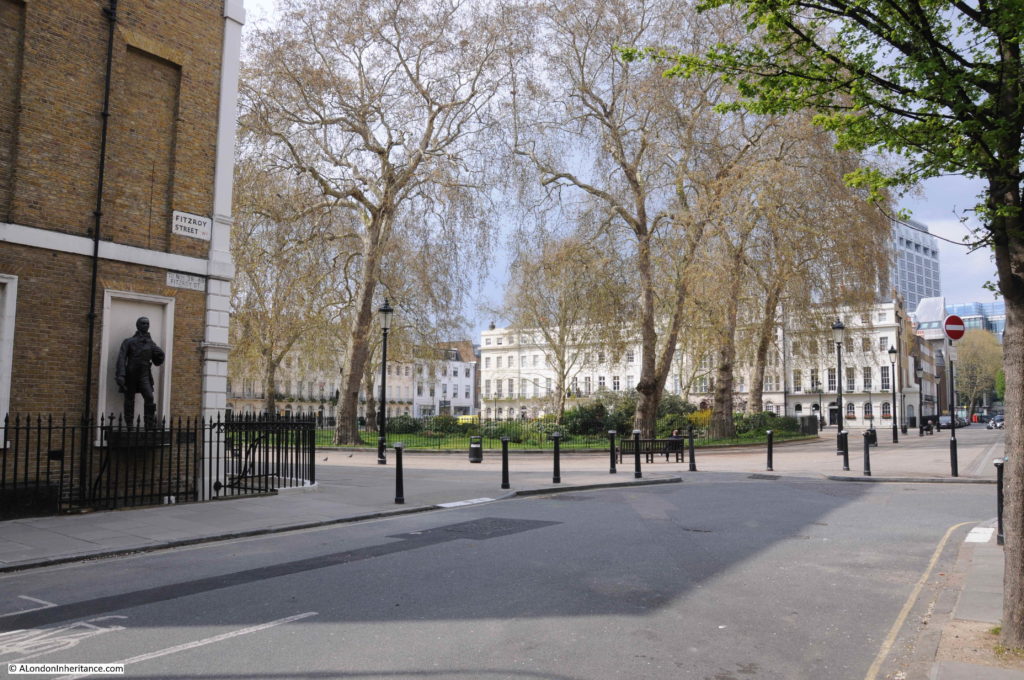
There is an Indian YMCA at No. 41. One Sunday morning in the 1990s, when I was walking to work at the nearby Broadcasting House, somebody threw the remains of a curry out of a second floor window. It landed square on the top of my head.
Despite my best efforts at the washbasins in the ladies’ loo, I got some funny looks all day.
As ever, an eagerly looked-forward-to read on a Sunday morning. Re your final comment about exiled revolutionaries in London – I’ve always been interested in the two blue plaques for Lenin – from memory Percy Circus and Tavistock Street… but never yet researched what he was doing there!
Thank you for all the info and photos I worked in Euston Square in the 1950s for the NUR and know it well, the houses and squares are really great
That’s bizarre Tessa -but made me smile. Glad you weren’t hurt!
Thanks Mike! It did include a white plastic fork, which might have been nasty! I still walk through this beautiful square, but not underneath the windows of the Y!
On another subject: don’t know if anyone has remarked on the fact that there used to be a Hospital For Clergymen on the north side.
A house in the square was the setting of Saturday, a book by Ian McEwan.
Another resident I believe was Griff Rhys Jones – I remembering reading about some sort of dispute he was having about some nuisance or other.
🙂
Something else that improves the quality of London life is your blog! Always interesting, full of detail and information, and excellently illustrated with maps and photos, as is this one on Fitzroy Square.
The YMCA mentioned above by Tessa is officially the Indian YMCA — which is not me being pedantic — there is a difference. The YMCA movement is (and was) very important in India and they can some of the best places to stay on the subcontinent. As a legal entity (is that the right expression?) they are very much ‘Indian’ YMCAs, and the Y at the corner of Fitzroy Square has food which is the only Indian food I’ve eaten in London that tastes like food in India, particulary the food at the New Delhi YMCA. That might explain the defenestration of the curry?
Otherwise Fitzroy Square has other interesting facts and features, apart from those mentioned in this wonderful (as per usual) article. The Omega Workshop (cf Roger Fry, Duncan Grant, Vanessa Bell et al) had their early premesis c 1913 at number 33, and early on it was one of the few places to go in London where you could by any of their furniture, paintings, shawls, tapestrys etc. The Georgrian Group has had a hand in running number 33 off and of over the past ten years or so, and until recently (there is restoration going on at the present) were able to hire out the building, or parts of it, for celebrations, parties, etc. Further along from 33 (not quite sure of the numbers) the film maker (and ex-husband of Madonna) Guy Ritchie owns two houses (they have small shrubs on the balconies) which were knocked together to make one large house for him. And finally, the Georgian Group is at number 6. The Group, a charity, is the reason a great deal of Georgain London has survived, and they are always looking for members. Vist them during the week, or ring 020 7529 8920 for membership detail. (Not paid advertising!!!)
Another marvelous piece that takes you back to the past, thank you.
It would be interesting to know if there are any actual families living in any of the houses possibly decedents of the original owners
Beautiful expose of hidden London. Always look forward to received these articles.
Might be worth adding that the Fitzroy Square gardens are still private—for residents of the square only (as is nearby Bedford Square) unlike most other squares in the west end these days, which have been opened up to the public.
Further to Gilbert O’Bren’s comment above, I endorse his appeal to those who are interested in preserving our Georgian heritage. Too many Georgian buildings are unlisted and need protection, which the Georgian Group tries to provide, particularly against unsuitable alterations such as plastic windows replacing sashes (www.georgiangroup.org.uk). They also produce a wonderful annual Journal, publishing the latest research into architecture from the late 17th century to 1837, with back numbers soon to go online. As far as Fitzroy Square is concerned, interestingly, Robert Adam provided designs for the east and south facades of the square but various spec builders provided the houses behind them, so there is much more internal variety than you might expect. The market supplying Lord Southampton’s upmarket development was originally in Fitzroy Market, now renamed Whitfield Street
One of the houses was used extensively for Daniel Day Lewis’s last film, Phantom Thread https://www.dailymail.co.uk/news/article-5267795/Townhouse-Daniel-Day-Lewis-shot-film-sale.html
Thank you so much for your wonderful blog. You put so much effort into researching the places you photograph. From far away Melbourne, it makes me feel connected to London. I look forward to visiting some of the places you feature on my next trip.
Another fascinating blog . Thanks.
The square has had numerous celebrity residents in recent years including Gryff Rhys-Jones, Guy Richie, Fay Maschler & Reg Gadney, Gary Kemp, Linda Bennett, and of course Ian McEwan who wrote “Saturday” when he lived at no.11.
A couple of other snippets – The square used to be clogged up with car transporters in the days when Warren Street was the place to buy a secondhand car and the Victoria Line runs diagonally from NW to SE under the square and a major shaft in the Square Garden was used during the construction (much like Finsbury Square Garden is being used for Crossrail at the moment).
Didn’t there used to be a large number of cats living wild in the Square? Possibly also noted by Virginia Woolf. They seem to have disappeared in recent years, I wonder what happened to them.
I first came across the name Fitzroy Sq when I worked in the Sudan on a sugar estate about 350 miles south of Khartoum,39 Fitzroy Sq was our lifeline with the outside world as that was where all our mail went to and from by courier.A little snippet of social history,Khartoum was the only place outside the UK which had a milk delivery service still using the old style milk bottles which were wide necked with a waxed cardboard roundel which fitted in the neck of the bottle
In Ian McEwan’s novel ‘Saturday’, set on Saturday 15 February 2003, the central character Henry Perowne, a neurosurgeon, lives in Fitzroy Square. There are photos of the square, one showing the south side, on the covers of the first paperback edition. I’m not sure if the square is described in detail but numerous streets in Fitzrovia and Bloomsbury are mentioned and also Spearmint Rhino on Tottenham Court Road.
I was so pleased to find this page, as I lived for a time at 15, Fitzroy Square, on the northern side next to St Luke’s Hospital for the Clergy, which I think existed there until 2009. The house where I lived was owned by a charity called Toc H, which had its origins in World War 1, and had I believe been gifted to them. It was one of several they owned in different parts of the capital, which they ran as hostels for young men coming to London for work, and the idea was that everyone living there should be involved for at least a few hours a week in activities which benefitted others in the local community. The property included a basement level which connected it to the mews house at the rear, which faced into Richardson Mews. Feeling that this concept of homely accommodation and local service was outdated, the charity closed the house down in about 1980 and sold the property for what seemed to be less than its potential value. At one time, my room was at the front of the house, on the second floor overlooking the square, and I joked that the Post Office Tower, if it fell at exactly the right angle, would just take out the window of my room, but leave me unscathed.